Recent Articles
Popular Makes
Body Types
2021 Jeep Wrangler 392 Road Test and Review
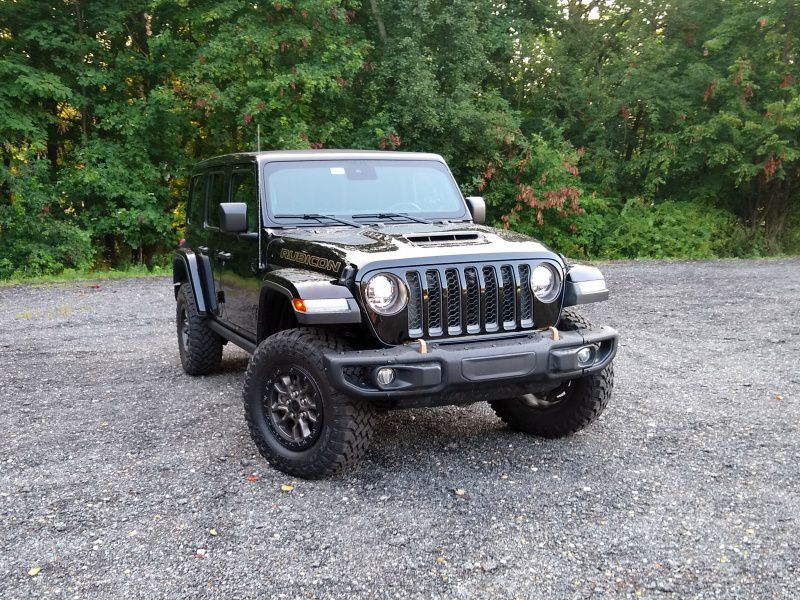
2021 Jeep Wrangler Unlimited Rubicon 392 ・ Photo by Brady Holt
The Jeep Wrangler is an incredible off-road machine. Its mission is pure: capability first, everything else second. Each successive Wrangler becomes more and more civilized, but in everyday driving, it’s still a bouncy, noisy, clumsy, expensive way to get around.
Jeep decided what this vehicle needed was a V8 engine. And not just any V8 engine, but a 470-horsepower monster adapted from the Dodge Challenger SRT-8 performance coupe. Jeep calls this model the Wrangler 392, named for the 6.4-liter engine’s 392 cubic inches of displacement. Of all the vehicles in the world that needed sports-car-like acceleration, a Wrangler doesn’t fit high on any logic-focused list. But take a step back. Broadly speaking, the Wrangler is about being cool. And speed is cool. Just how cool? We spent a week in the Wrangler 392 to find out.
Pay Up
If you think of Jeep Wranglers as cheap, basic transportation, you haven’t been paying attention for years. These are luxury cars that cost $30,000 with no options (manually cranked windows, manually shifted gears, and no air conditioning) and $50,000 or more with goodies like leather, upgraded engines, and in-dash navigation systems.
The new Wrangler 392 takes that pricing to an extreme. It starts at a jaw-dropping $74,795. A few optional features and a destination charge pushed our test vehicle to nearly $80,000. Every Wrangler 392 comes luxuriously equipped, but it’s still a five-figure premium over a comparably equipped Wrangler V6. At first glance, that can seem crazy. But here’s the thing: If you treat Jeep as a luxury brand with high-end prestige, as its vehicles indeed command, the Wrangler can become a bargain. The V8 version of the Land Rover Defender costs more than $100,000, and a Mercedes-Benz AMG G 63 starts at more than $150,000.
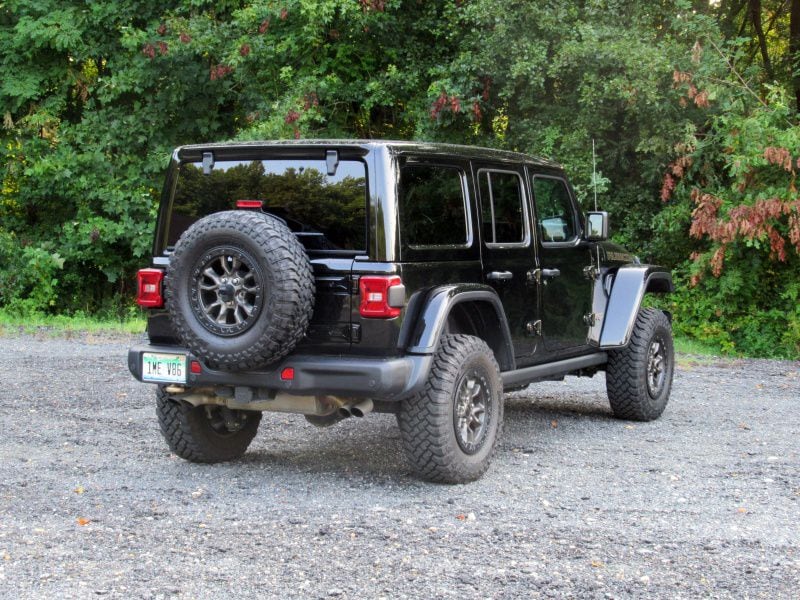
Photo by Brady Holt
When 331 Horsepower Won't Do
Jeep rolled out the Wrangler 392 as a snub to the all-new Ford Bronco, the Wrangler’s hot new rival. The Bronco comes with two lively turbocharged engines: a 300-horsepower four-cylinder and a 330-horsepower V6. Both outgun the Wrangler’s base engines. The V8 obviously had to beat them. But by how much?
Jeep could have gone with its entry-level V8: the 5.7-liter Hemi that’s found in the Grand Cherokee and Wagoneer SUVs, along with the RAM 1500 pickup and the R/T version of the Dodge Challenger and Dodge Charger. These all make between 350 and 400 horsepower, enough to motivate the Wrangler with authority and trump the 330-hp Bronco. But Jeep went all-out for this screamer with 470 hp and 470 lb-ft of torque. The Wrangler 392 is unexpectedly easy to drive gently, but it’s loud and unsubtle, and it pretty much settles any debate with Ford about whose SUV will be fastest. The Wrangler 392 reaches 60 mph in barely 4 seconds. Gas mileage? If you have to ask, you can’t afford it, but the EPA estimates are predictably dismal: 13 mpg in the city, 17 mpg on the highway, and 14 mpg overall on premium fuel. Our test truck returned 16 mpg.
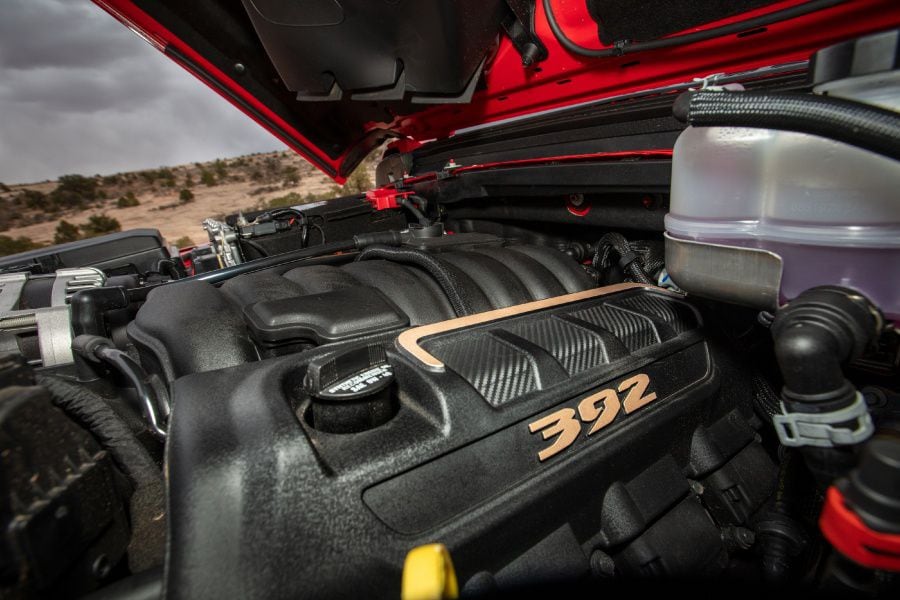
Photo by Jeep
No Compromises Off-Road
The Wrangler is an off-road machine, and Jeep didn’t disrupt that with the 392. Quite the opposite. Rather than making its V8-powered performance machine into a road-focused SUV, Jeep built the 392 from the Wrangler’s extra-capable Rubicon model. The 392’s off-road tires limit its top speed to 99 mph, which seems like more than enough anyway.
Like other Wrangler Rubicons, the 392 is among the most capable factory-stock automobiles you can buy today. And on top of that, Jeep even lifted the suspension and strengthened the frame for V8 duty. A high ground clearance, incredible suspension travel, and a sophisticated four-wheel-drive system will get you through nearly any obstacle. Note that you can’t get the V8 in the two-door Wrangler, only the bigger four-door Unlimited model.
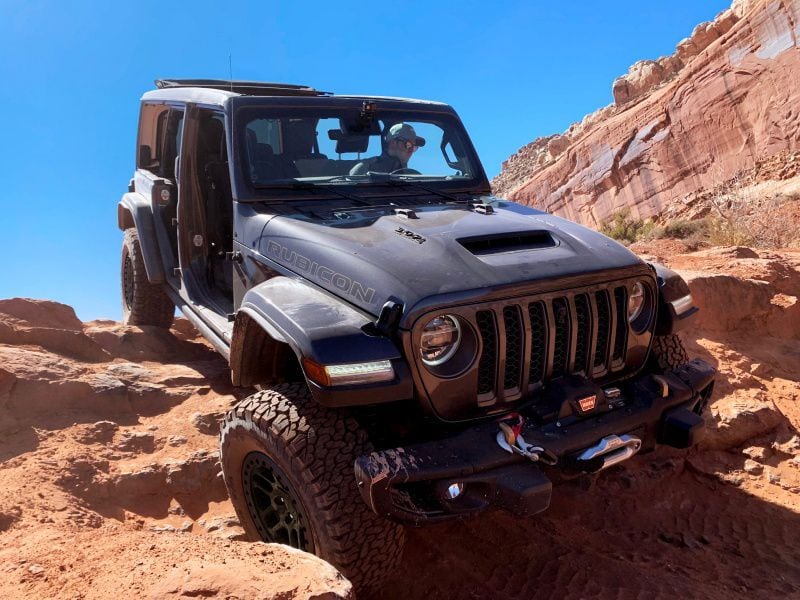
Photo by Jeep
Familiar Handling
Driving a Wrangler at high speeds requires attention. It doesn’t tempt you to steer with two fingers or check your phone. You grip the steering wheel and keep your bouncy, noisy rig pointed forward. And curvy roads provide constant reminders about physics: big, heavy, tall SUVs cannot drive like sports cars.
Jeep upgraded the 392’s brakes, welcome in any ultra-fast vehicle. But by keeping its focus on off-road capability, this Wrangler remains as unsettling to drive fast as the rest of the lineup. The difference is just that high speed comes a heck of a lot faster if you dig in to the accelerator. We hope the Wrangler 392’s noise, vibration, and wobbly steering will be subtle safety nudges, reminding drivers that they speed at their own risk. Other high-performance SUVs are engineered with much higher on-road handling limits, but if you overturn your V8 Wrangler, don’t say Jeep didn’t warn you.
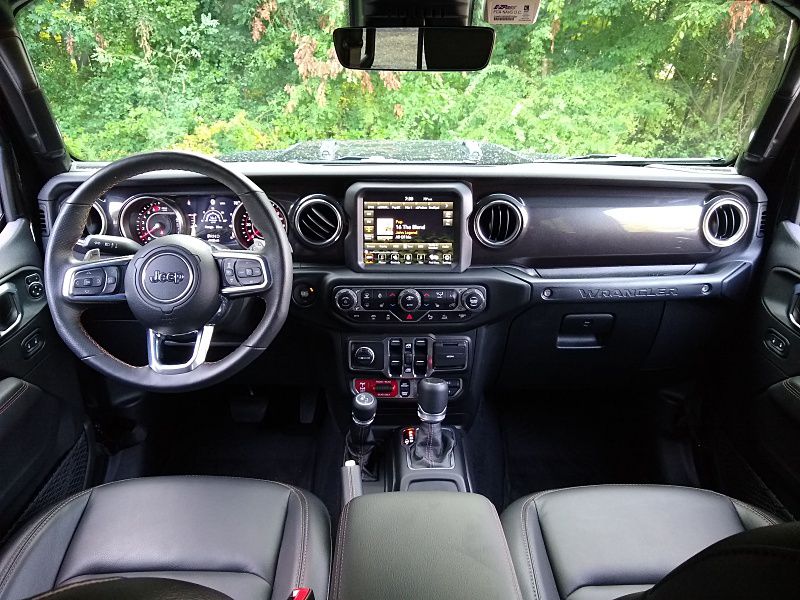
Photo by Brady Holt
Familiar Exterior
The V8 Wrangler looks the same as other models at a glance. It has 392 badging on its hood, where there’s also an air intake. It has big off-road tires like other Rubicon models. And our test vehicle’s shiny black paint projects an air of menace. But in a world filled with heavily modified Jeeps, the stock Wrangler 392 won’t catch much attention.
The basics are familiar: round headlights, a seven-slot grille, a spare tire on the back, and a boxy body in the middle. You get a choice between a removable soft top or a hardtop like our test vehicle; the roof and doors are removable, and the front windshield can even fold down if that’s not enough fresh air. This unique appeal helps justify the Wrangler at any price point; even if you’re on a luxury budget, you still need a Jeep if you want the world’s most open-air automobile.
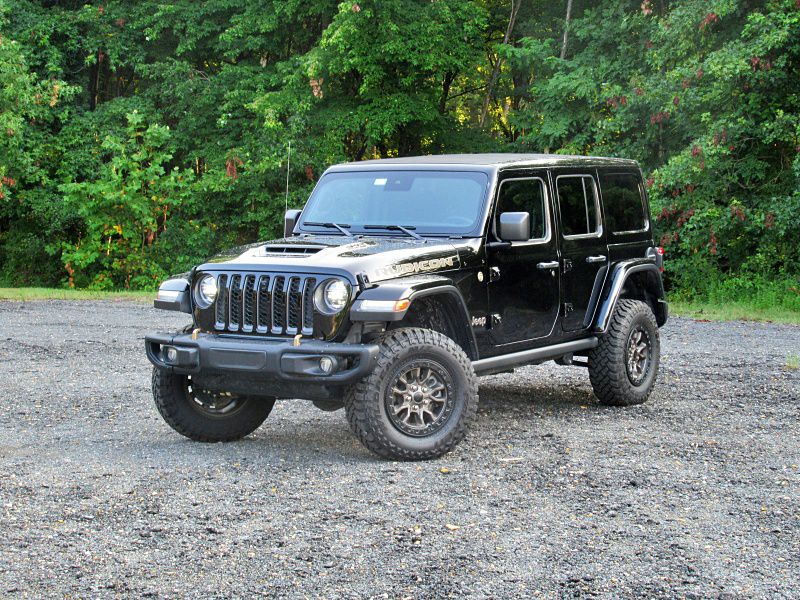
Photo by Brady Holt
Useful Interior
Unlike many high-cool-factor cars, the Wrangler has a genuinely useful interior. It’s a climb to get inside, and the rear seatbelt buckles were uncomfortable for one of our passengers. But unlike a sports coupe, this is a mid-size SUV with room for up to five adults. And cargo capacity reaches a useful 32 cubic feet of cargo space behind the rear seat and 72 cubic feet with the rear seat folded.
While this interior is still designed first and foremost to get dirty and get hosed out, cabin design and build quality no longer feel like an afterthought. It’s still a hardy Jeep, but it’s nicely built and equipped with an easy-to-use 8.4-inch touchscreen infotainment system. This cabin isn’t going to rival a Land Rover or Mercedes-Benz, but at least it feels like Jeep accomplished what it set out to build: well-executed simplicity. Styrofoam-looking insulation for the hardtop roof is neither rugged nor classy, though. And for nearly $80,000, we’d look for a power-operated driver’s seat.
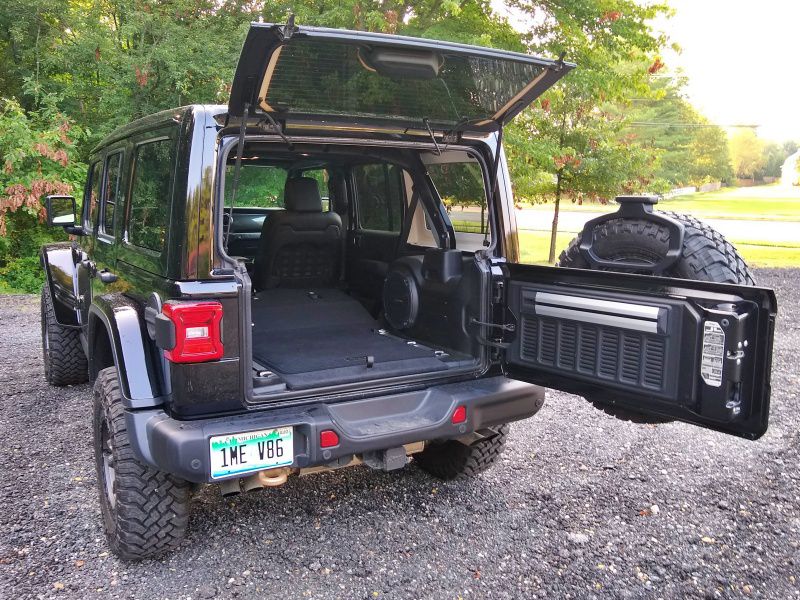
Photo by Brady Holt
Closest Competitors
The Wrangler 392 exists to one-up the Ford Bronco. Jeep announced the V8 Wrangler on the same day that Ford unveiled its long-awaited Wrangler rival. And while the Bronco lacks a variant with close to this horsepower, there’s otherwise a lot to like about it. While sharing most Wrangler advantages, it handles with more agility, has a nicer dashboard, has more cargo room, and is quicker than equivalent Wranglers. But if you’re shopping the 392, you’ll show your taillights to any Bronco.
As we mentioned, the 392’s other top rivals are high-power versions of boxy off-road machines. These are the Land Rover Defender, which just introduced an optional 518-horsepower supercharged V8, and the Mercedes-AMG G 63, which packs a 577-horsepower turbo V8. Both of these SUVs are much more richly finished than the Jeep, but you’d expect that given the price disparity. They also have less alarming handling, but they keep the appeal of a stupidly fast box.
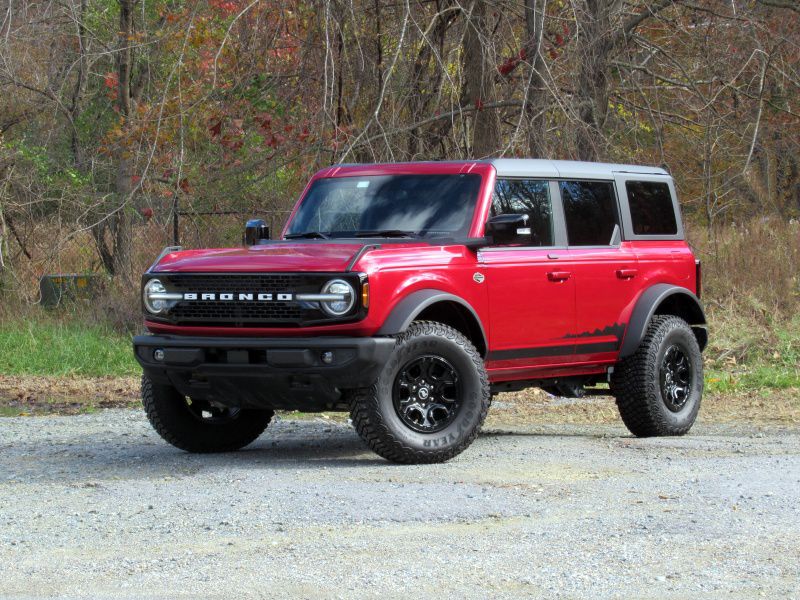
Photo by Brady Holt
Meet the Family
In the time since the current-generation Wrangler debuted in 2018, the model’s powertrain lineup has expanded from one engine choice to five.
In addition to the 392, the Wrangler is available with a 3.6-liter V6 making 285 horsepower and 260 lb-ft of torque, a 2.0-liter turbocharged four-cylinder making 270 hp and 295 lb-ft of torque, and a 3.0-liter turbodiesel V6 with 260 hp and a 442 lb-ft of torque. There’s also the new 4xe plug-in hybrid; it makes 375 hp and 470 lb-ft of torque (the same torque rating as the 392) and is the second-fastest Wrangler model (with 0-60 mph in less than 6 seconds). Plus, the 4xe can travel up to 21 miles per charge using only electricity before averaging 20 mpg. Opting for a non-V8 engine also opens the Wrangler lineup to a mix of trim levels and special editions, rather than locking you into a nearly loaded off-road-focused four-door Rubicon. Many of these other models are a fraction of the 392’s price, too.
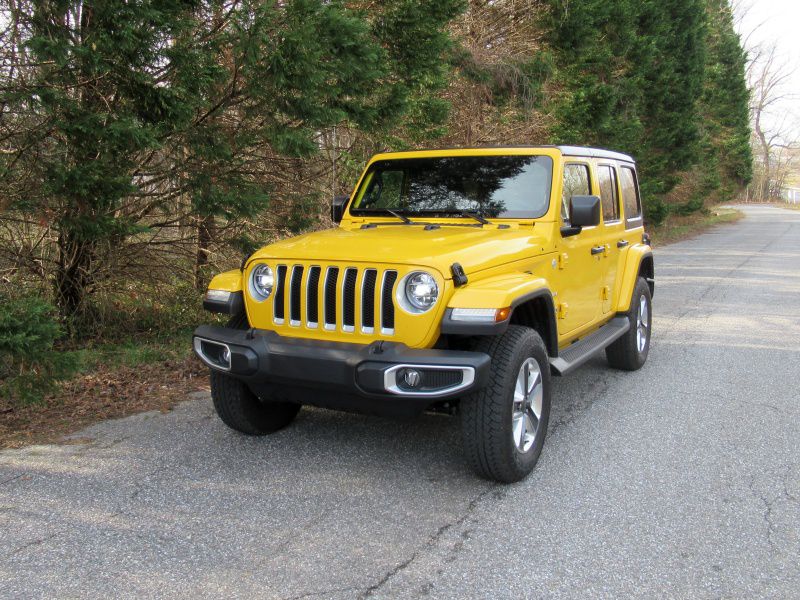
Photo by Brady Holt
The 'Crazy Jeep'
My 3-year-old summed up the Wrangler 392: “This is a crazy Jeep.” “Why is it a crazy Jeep?” “Because it’s so loud!”
She’s not wrong. For better or for worse, this SUV is loud, and it is crazy. It’s faster than it has any right to be, and Jeep charges an incredible amount of money for the privilege to drive dangerously fast in an off-road vehicle. But it’s so over the top, we see the Wrangler 392 as fitting naturally into multimillionaires’ diverse garages. It’s easy to picture our shiny black 470-horsepower Wrangler parked next to a Lamborghini. Or if you like Wranglers and like going fast, you might put all your budget into one vehicle rather than buying a four-cylinder Jeep and a separate sports coupe. If you’re ready to buy, note that this SUV’s full name is technically Jeep Wrangler Unlimited Rubicon 392. But the salesperson will know which one you mean. Just ask for the 392, the V8, or the “crazy Jeep.”
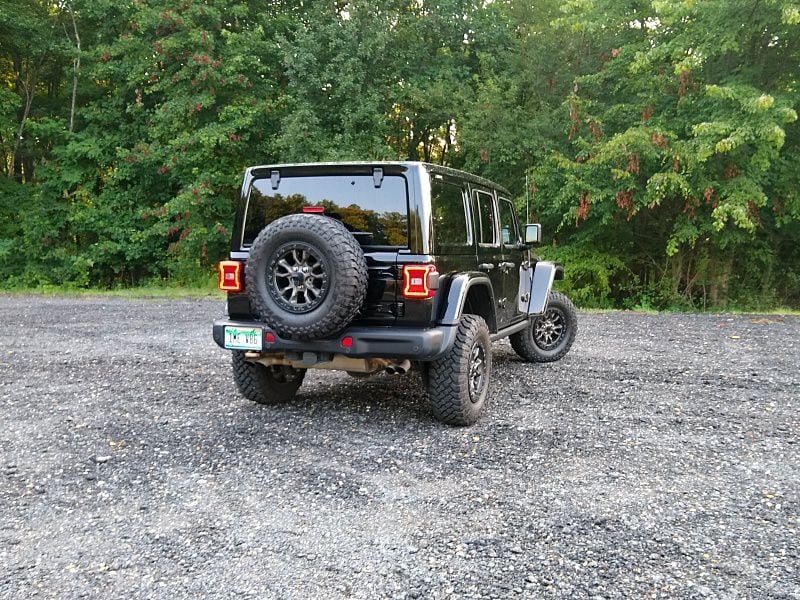
Photo by Brady Holt